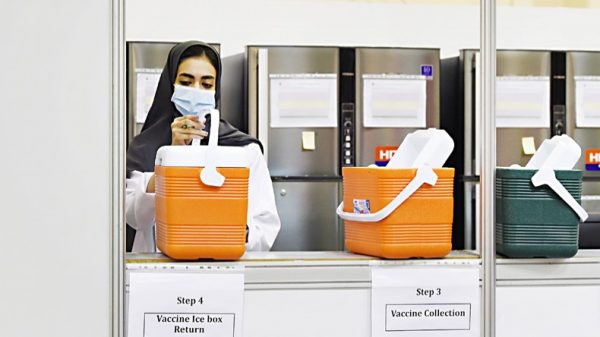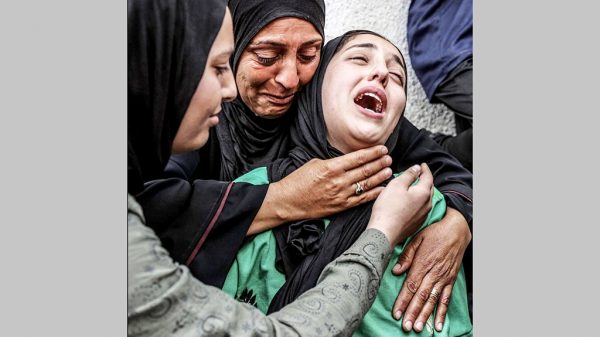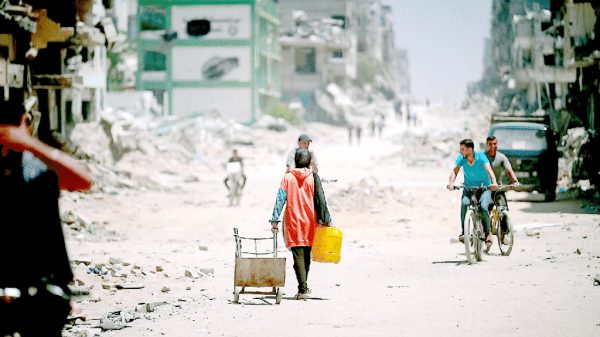COVID-19 estimates and phenomena

DAILY COVID-19 test positivity is slightly above 20 on an average in the country. The case fatality rate — death among people confirmed to have been infected with SARS-CoV-2 — is slightly above 1.3. The infection fatality rate — death among all the infected, identified or not identified virologically or serologically — is not known. Death has an age gradient and is about three times more among males. More males than females are infected with SARS-CoV-2 that causes COVID-19.
Age brackets and death from COVID-19
ARE deaths from COVID-19 due to age per se or it is a reflection of their population proportion? About 44 per cent of the deceased is 60 years of age or above. The population proportion belonging to 60 years of age or above is 7.47 per cent in Bangladesh. The proportion between 51 and 60 years is 6.28 per cent, but death among them is 29 per cent. Population proportion aged 41–50 years is 10.17 per cent, but death among them is 14.75 per cent. The proportion aged 31–40 years is 13.92 per cent and death among them is 7.15 per cent. The death rate among 21–30 years of age is 3.32 per cent while the population proportion of this age group is 18.59 per cent. About 1.14 per cent of 11–20 years of age is dying of the disease but the population proportion of this age bracket is 20.49 per cent. While 0.59 per cent dying of the disease is 10 years of age or less, the population proportion of this age group is 23.08 per cent. So, it is the people not the population size which is vulnerable because of some known reasons.
Why more male?
THIS phenomenon has not been well understood even globally. One reason may be the smoking habit differential by sex. Biologically, females are known to produce a more effective immune response to pathogens, especially to viruses. Androgen in males has also been incriminated to produce a stronger inflammatory reaction. Sex difference in ACE2 level, which is the docking site for SARS-CoV-2, is higher in male, which may explain why more men are dying of the disease. The presence of ACE2 on the X chromosome, being only a single copy of the gene, can also enhance harmful effects of X-chromosome-linked diseases. The effect of sex was seen beyond effects of age, body mass index, smoking, ethnicity, socioeconomic status and underlying health conditions on the death rate.
Characteristically, women report to healthcare providers earlier than males for the same degree of an illness. The rate of infection, not death, however, may not be sex- but gender-related. A lower number of females may be tested, identified and recorded for SARS-CoV-2 infection. In many western countries, male and female infection rate was found to be either equal or more among female.
What case positivity rate implies?
CASE positivity would depend on who are tested. The more of those who have strong possibility to be infected are tested, the more will be the test positivity rate. If tests include the individuals who were not exposed to the virus or did not come into contact with COVID-19 patients, test positivity will be lower. Test positivity itself does not indicate the actual load of a disease. It indicates the trend of a disease, but only when the same criteria are used for testing all through. Case positivity may be lower though because of faults in sample collection and storage and delay in sample transport. It would be higher if there is contamination of the accurately collected, stored and transported samples during testing with other samples containing the same virus in the laboratory.
Number of tests, cases and death
THE number of tests fell as more restrictive definition came into use from mid-July — testing only those who suffer from a combination of cough, throat pain, fever and breathing problem. The number fell also because of the flood, which made it difficult to approach those who needed to be tested and vice versa. The number of death from COVID-19 also fell, especially those who are usually reported in newspapers as suffering from clinical features suggestive of COVID-19 infection. The number of death, however, is not falling commensurately. This is because information on death is too evident to overlook or to go unnoticed. The increase in the number of death in after Eid-ul-Azha is probably due to a higher exposure and the infection of those who are prone to death, as the bar of caution has been lowered.
There were opinions that the number of tests fell because of the levying of a fee. One study showed that the fall due to fee application was about 3 per cent. Did this 3 per cent really need the test? In the past, the test positivity result was low as many tests yielded negative result. It became high when a more restrictive strategy of sample collection and testing was applied.
Testing aims at finding out cases for isolation and contacts for quarantine to restrict the spread of infection. The present strategy of testing tells only of COVID-19 trend, not a mean feat. But as contact identification did not and probably will not work, as we hide facts, we should be happy about testing only those who are suffering from suggestive clinical features, as neither we can identify and test contacts nor quarantine them. An increased number of tests on a daily basis will not help much, as those who would be left out will spread the disease in the meantime and those who are identified cannot be quarantined factually. One may argue that increasing tests would identify a good number of infected people, but how was successful was this endeavour in the past and do we have enough strength and resources to enforce quarantine at this stage of the bushfire?
Which tests to use?
SAMPLES are tested through a polymerase chain reaction on a real-time basis, which employs a reverse transcriptase-based polymerase chain reaction. Each run of the test is done for 94 samples at a go and it takes 3–4 hours. This test, done from samples taken from the naso- or oro-pharynx, is about 67 per cent positive. So for every 67 correctly identified people, about 33 infected people are missed. The collection of samples in wrong ways adds another dash to the missing of actual cases, which may be 5–10 per cent. PCR test is viral genome, more specifically, nucleic acid-based test. It is the ‘gold test’. The government is now mulling over instituting antigen-based test. It can be used at community level, it is much cheaper and it takes only 20–30 minutes to get the result. But its accuracy is close to 50 per cent. It needs to be used, therefore, in conjunction with rT-PCR — those negative by antigen test but showing clinical features must be tested through rT-PCR.
For some unknown reasons, the government is not ready to conduct antibody-based test although these tests are more than 90 per cent accurate. Until and unless antibody-based test is done, we will never know the extent of the disease. Nucleic acid and antigen-based tests only tell us if the virus is present in the body during the test. But the number of the people who recovered without any test or the people who were infected in the past but did not show any clinical features and, therefore, were not tested will not be known until an antibody-based test is done. Even this will not let us know of the infection status of the people who recovered in March–May, as the longest surviving antibody, IgG, wanes below detectable level after three months.
IEDCR and ICDDR,B survey
THE survey conducted in the Dhaka city included people who showed any of the four clinical features in contrast to the national strategy of picking up for testing only people who have all the four clinical features. It also included the asymptomatic members of the families and some families, where none showed any clinical features. As the survey included anyone who had any of the four clinical features, it naturally found 30 per cent of the suspected cases as positive in contrast to about 20 per cent, as per the DGHS bulletin, which gives the national estimates. For the first time, we came to know what per cent of people in the Dhaka city, or in the whole country, for that matter, is infected without any symptoms — 22 per cent. But the death rate, which was found to be only 0.47 per cent in the survey, is way below the national estimate of more than 1.30 per cent even for the Dhaka city. The age-wise distribution of the cases also did not reflect the national or global estimates. The survey found 9 per cent of the Dhaka city people to be infected. But this represents only a fraction of the true infection, as it did not take into account past infections and we also need to add up the missing cases due to the flaws in the accuracy of tests and sample collection. This survey also is a pointer to the fact that if we had tested people suffering from any of the four clinical features of the disease, the national prevalence would have been higher.
The survey was conducted over a month. It, nevertheless, gave a point prevalence estimate, as after a home was visited once, it was not revisited. So, it did not take into account those who could be infected later, after that one-time visit to a given home. If a period prevalence estimate had been made for that month, it would have given a period prevalence for the entire month and a much higher rate of infection. A period prevalence estimate should also include sero-prevalence through antibody test. If a point prevalence of 9 per cent meant infection of about 16 or 18 lakh people, then accounting for 33 per cent false negative cases due to the inherent failure of the ‘gold test’ and at least 5 per cent diagnostic failure due to the faults in sample collection, even the point prevalence would be higher by about 38 per cent, which would mean close to 25 lakh or 14 per cent of people of the Dhaka city of 1.80 crore. The suggested point prevalence survey could end up in about 28 per cent of the Dhaka city population as infected, if it were a period prevalence survey. But what about those who had been infected since 8 March? We will never know this estimate beyond June.
Fate of vaccines in development
HALF a dozen vaccines are in the third phase of development. One type of vaccine is based on the genomic sequence (some in recombinant form in adenovirus) to produce the viral spike protein while some vaccines target neutralizing the spike protein. The first and the second phase trials have been claimed to be successful on safety and efficacy parameters. But the voice did not sound strong on the degree of the efficacy, including the duration of immunity, by either type of the vaccines. It might be as good as the vaccine to H1N1-the Spanish flu virus that has existed globally since 1918, albeit on diminutive scale. The vaccine given on yearly basis, prioritising the elderly, does not address the year-end mutation of the virus. The same may be the scenario of SARS-CoV-2. However, there may be a possibility that the virus may vanish like its predecessor SARS-CoV-1.
AM Zakir Hussain is a former director, Primary Health Care and Disease Control, former director of IEDCR, DGHS, former regional adviser of SEARO, WHO and former staff consultant, Asian Development Bank, Bangladesh.




























Leave a Reply